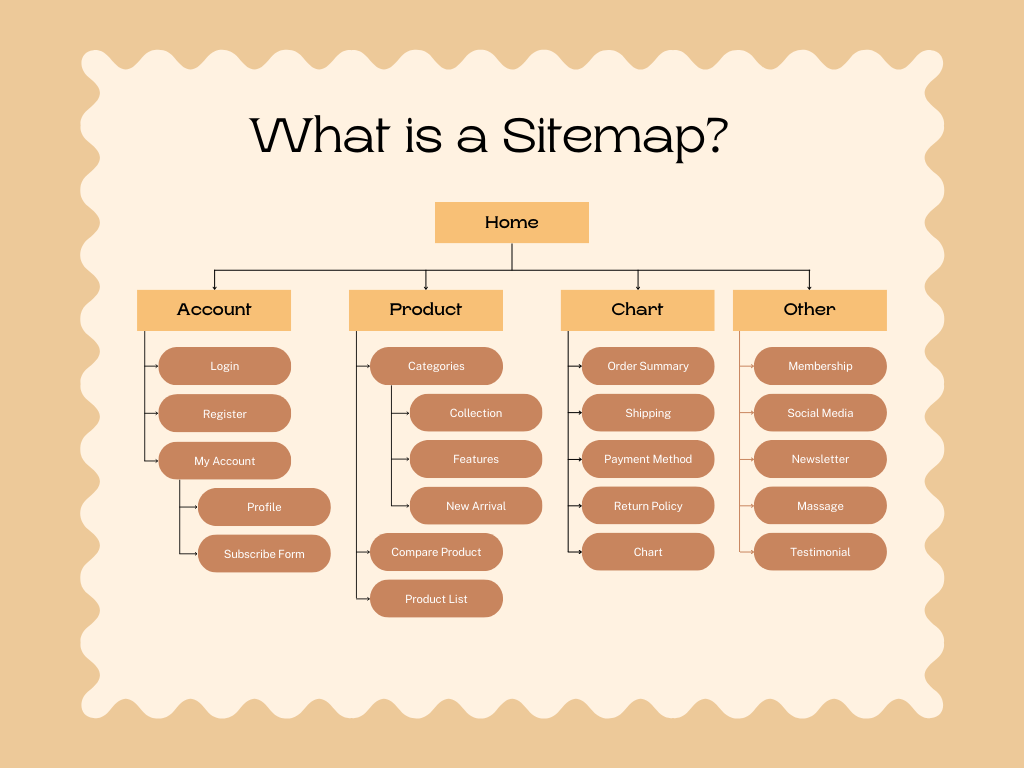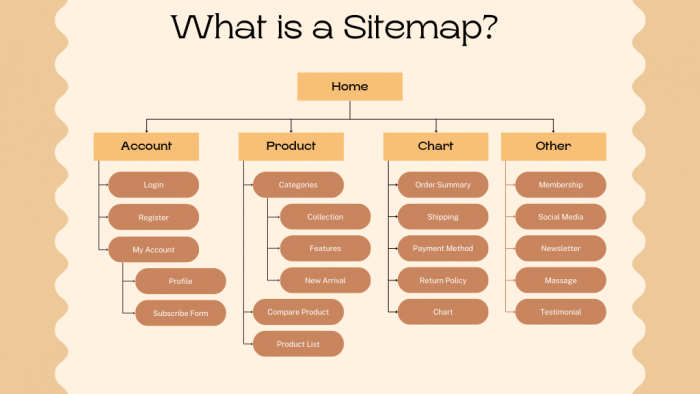A sitemap is a file on your website that lists all the important pages on your website and shows how they relate to each other.
It’s the blueprint of your site that search engines use as a guideline to discover, crawl, and index sites more efficiently. Sitemaps also provide valuable details about pages, such as the last modified date, the page’s priority level, and alternate language versions.

Why are Sitemaps Important?
Sitemaps make it easier for Google and other search engines to crawl your website efficiently. The faster your website is crawled, the more likely it is to be indexed and for your pages to rank on search results.
Let’s look at these benefits in detail:
Sitemaps are a vital link to your website’s success
Sitemaps improve your site’s crawlability and ensure all the important pages are indexed. This way, your pages rank faster with your targeted keywords on search results, making it easier for you to drive organic traffic.
Sitemaps help Google discover new and orphan pages
Web crawlers follow links from one page to another when crawling websites.
With a clear sitemap, crawlers are guided to new pages, even when the new pages are not in your internal linking structure.
Signal high-priority pages and keep them performing well
We often modify our high-value pages frequently. Since sitemaps contain page details and updates and quicken the crawl and indexing journey, users can see the most updated version, keeping the pages performing well.
Types of Sitemaps
There are two main types of sitemaps. XML (for search engines) and HTML (for users). Let’s look at each time in detail:
XML Sitemaps
XML sitemaps are files that provide structured information to search engines about the content on a website. They contain essential details of your site, such as webpage and their URLs and last modification dates.
XML sitemaps provide a roadmap for search bots to discover, crawl and index your webpages. Search engines are guided to “know” which of your pages are prioritized and the freshness of the content from details like last updates.
There are some benefits for having XML sitemaps. For example, you improve SEO because they help in indexing all your pages. They also help search engines crawl your website more efficiently.
HTML Sitemaps
HTML sitemaps are pages that list how a website is structured specifically for human users. They are created using HTML markup to improve user experience and website presentation.
With HTML sitemaps, users can easily navigate your site. These sitemaps improve user experience and can reduce bounce rates, improving your SEO.
Here’s an example of an HTML sitemap from the AirBnB website
How to Create and Submit a Sitemap
You can create your sitemap manually or use a sitemap generator.
To create your sitemap manually, use a text editor or an XML editor and customize the URLs to your site’s URLs.
With a sitemap generator, you can simply use a plugin and automatically generate a sitemap. You can get different plugins on WordPress for both XML and HTML sitemaps.
After creating your sitemap, verify it using an online XML sitemap validator to ensure it is error-free. Google Search Console Sitemap report can help you detect any issues.
Here’s how to submit your verified sitemap to Google:
- Sign in to your Google Search Console
- Select your website property
- In the left sidebar, click on “Sitemaps.”
- Click the “Add/Test Sitemap” button.
- Enter the URL of your sitemap (e.g., https://www.marketingisle.com/sitemap.xml) and click “Submit.”
After submitting your sitemap, update it regularly and monitor its performance to detect any crawl errors or indexing issues.
How does Good SEO content Complement Sitemaps
Good SEO content complements your site’s sitemaps and make your website better optimized for search engines.
Content that is relevant, keyword-optimized, and written for humans when properly represented in your sitemap helps search engines understand your site’s content and rank it higher in search results.
Here are ways content complements sitemaps:
- Improved crawlability: When search engine crawlers follow a structured and organized map, they accurately reflect the most important and relevant pages. No important content is missed during the indexing process.
- Content prioritization: You can prioritize pages based on keywords and help search engines understand the most critical content on your site, making it more likely to appear in search results.
- Faster indexing: When you regularly publish fresh, high-quality content, updating your sitemap with new URLs can expedite the indexing process
- Rich snippets: If you have included structured data in your content pages, you can add the information to your sitemap and get featured in a rich snippet.
Get SEO Content Help
In the age of AI, you want your content to speak to your target customers and convert.
We can help.
We offer well-researched SEO content written for humans to transform your digital presence and boost your site’s rankings.
Our services include:
- Keyword-optimized content
- Website copies
- Long-form blog articles
- Email copies
- Social media ghostwriting
- Content strategy through topic clusters
Comment below or contact us to schedule a free content assessment


[…] crawlers can only access orphan pages from a sitemap or backlinks, limiting their discoverability. Orphan pages are not connected to your internal site […]